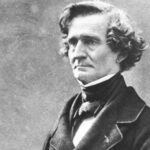Bard Music Festival
Program TwelveShared Passions, Different Paths
August 20, 2017
Bard Music Festival
August 20, 2017


3:30 p.m. Preconcert Talk: Christopher H. Gibbs
4:30 p.m. Performance: Danny Driver, piano; Tamara Mumford, mezzo-soprano; Miles Mykkanen, tenor; Önay Köse, bass-baritone; Bard Festival Chorale, James Bagwell, choral director; The Orchestra Now, conducted by Leon Botstein, music director
Fryderyk Chopin (1810–49), Andante spianato et Grande polonaise brillante, Op. 22 (1830–35)
Hector Berlioz (1803–69), Roméo et Juliette, symphonie dramatique, Op. 17 (1839)